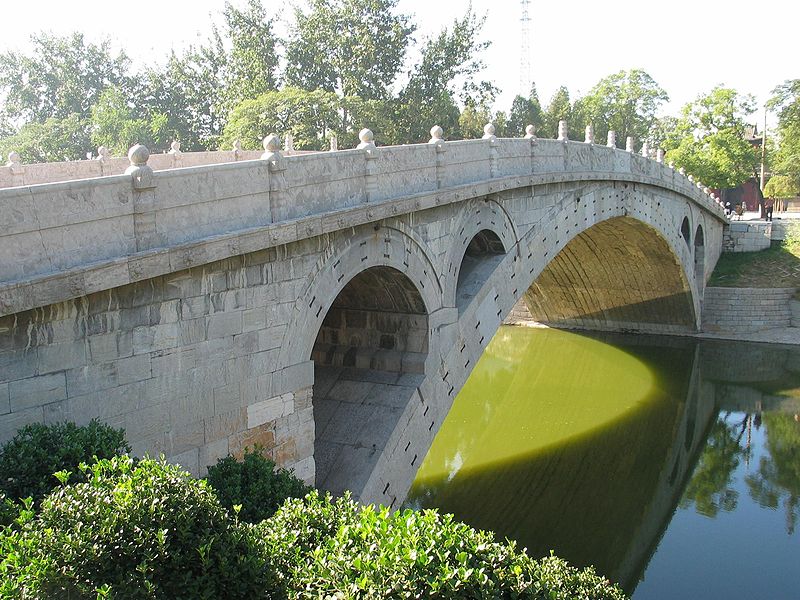| |||||||
Europe
North AmericaSouth AmericaAsiaAustralia and OceaniaAfrica |
Смотрите также: Zhaozhou Bridge The Zhaozhou Bridge is the world's oldest open-spandrel stone segmental arch bridge. Credited to the design of a craftsman named Li Chun, the bridge was constructed in the years 595-605 during the Sui Dynasty (581–618). Located in the southern part of Hebei Province, it is the oldest standing bridge in China.
Zhaozhou Bridge Crosses Xiao River Locale Zhao County in Hebei Province, China Design Open-spandrel stone segmental arch bridge Total length 50.82 metres (167 ft) Width 9.6 metres (31 ft) Height 7.3 metres (24 ft) Longest span 37.37 metres (123 ft) Beginning date of construction 595 AD Completion date 605 AD The Zhaozhou Bridge is also known as the Safe Crossing Bridge, englished as the Anji Bridge and the Great Stone Bridge. It crosses the Xiao River in Zhao County, approximately 40 km southeast of the provincial capital Shijiazhuang. It is named for the nearby Zhao County, which was formerly known as Zhaozhou. The arch covers a circular segment less than half of a semicircle (84°) and with a radius of 27.27 m, has a rise-to-span ratio of approximately 0.197 (7.3 to 37 m). This is considerably smaller than the rise-to-span ratio of 0.5 of a semicircular arch bridge and slightly smaller than the rise-to-span ratio of 0.207 of a quarter circle. The arch length to span ratio is 1.1, less than the arch-to-span ratio of 1.57 of a semicircle arch bridge by 43%, thus the saving in material is about 40%, making the bridge lighter in weight. The elevation of the arch is about 45°, which subjects the abutments of the bridge to downward force and sideways force. The central arch is made of 28 thin, curved limestone slabs which are joined with iron dovetails. This allows the arch to adjust to shifts in its supports, and prevents the bridge from collapsing even when a segment of the arch breaks. The bridge has two small side arches on either side of the main arch. These side arches serve two important functions: First, they reduce the total weight of the bridge by about 15.3% or approximately 700 tons, which is vital because of the low rise-to-span ratio and the large forces on the abutments it creates. Second, when the bridge is submerged during a flood, they allow water to pass through, thereby reducing the forces on the structure of the bridge. Comments: 0 |
|
|||||







































